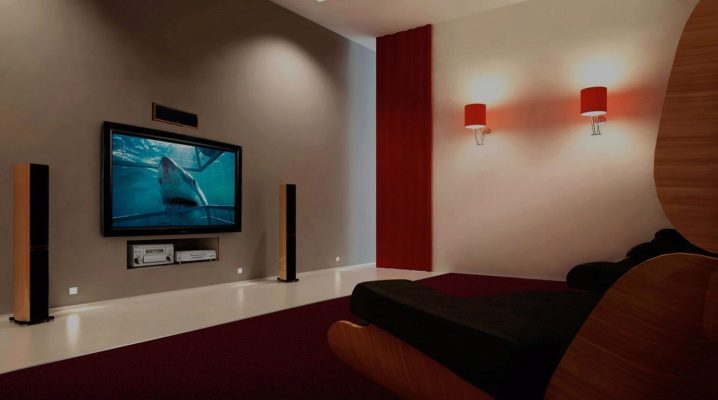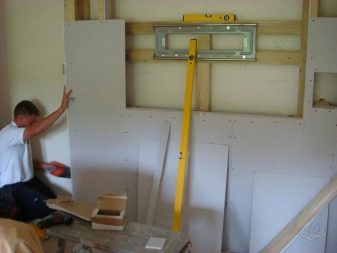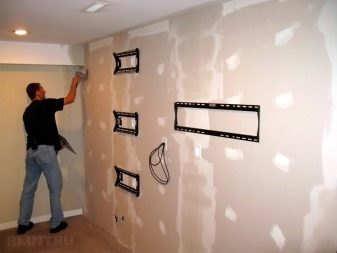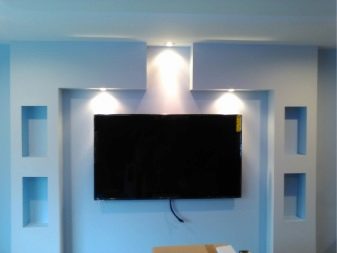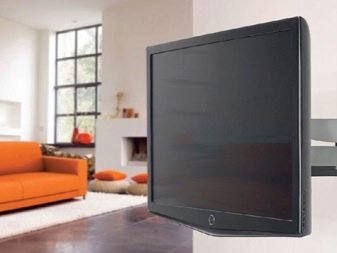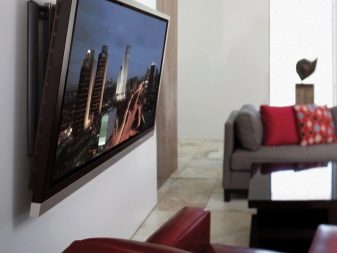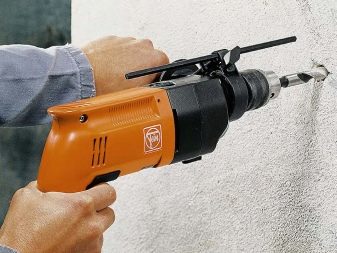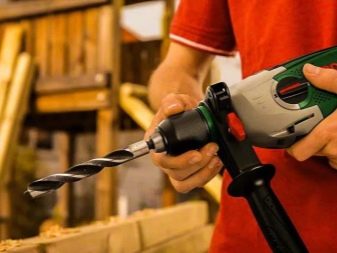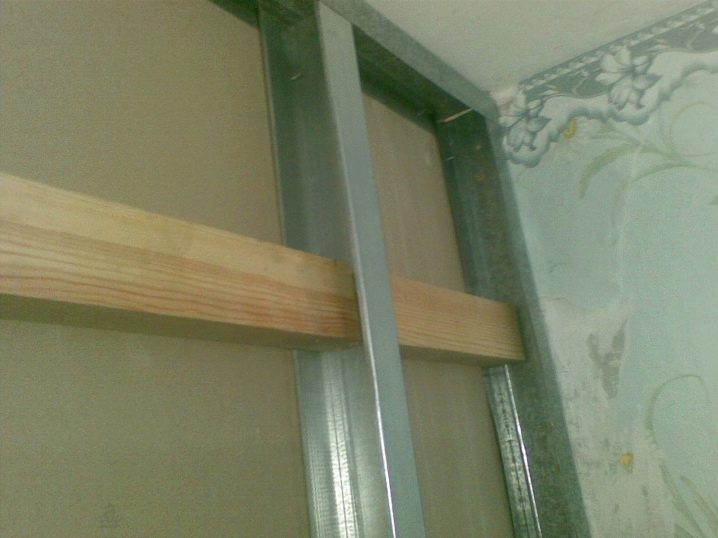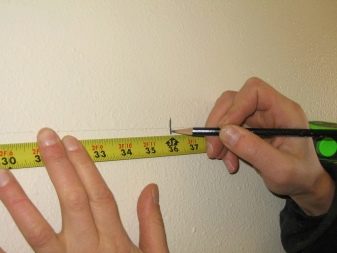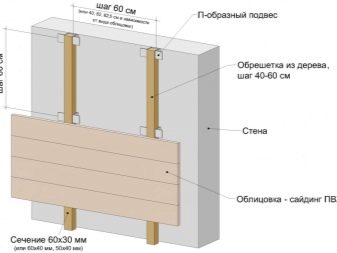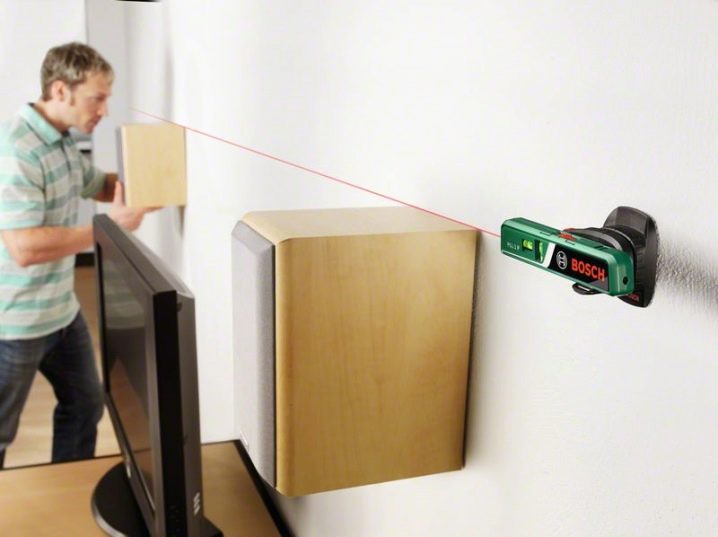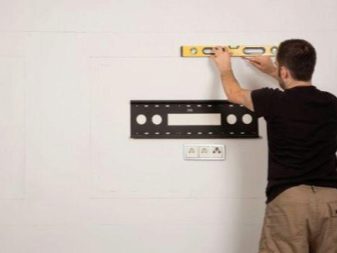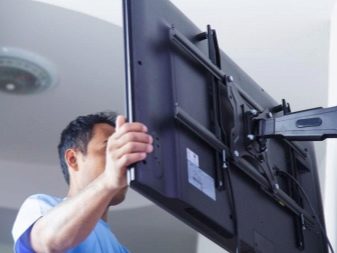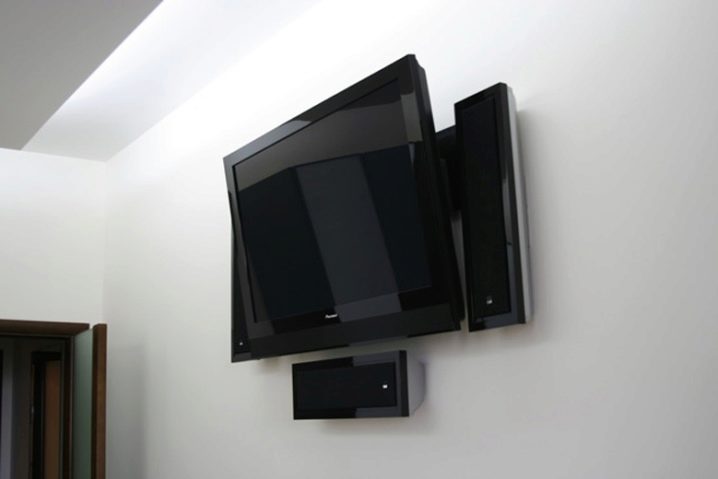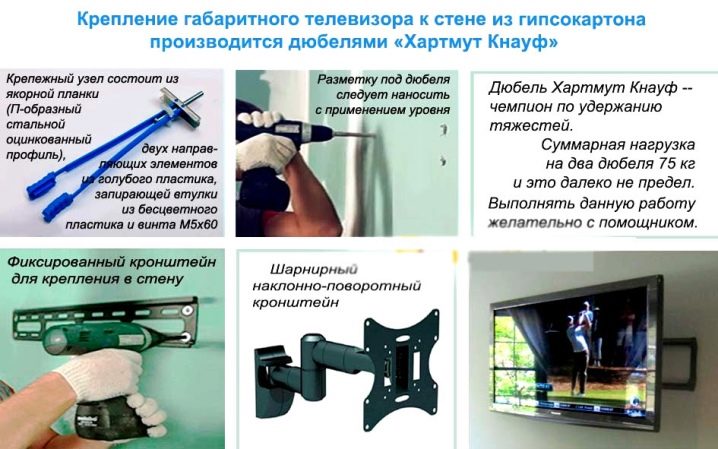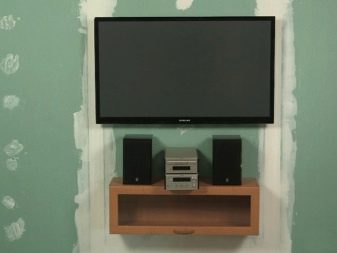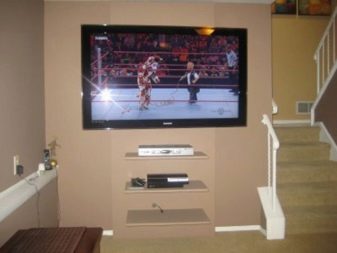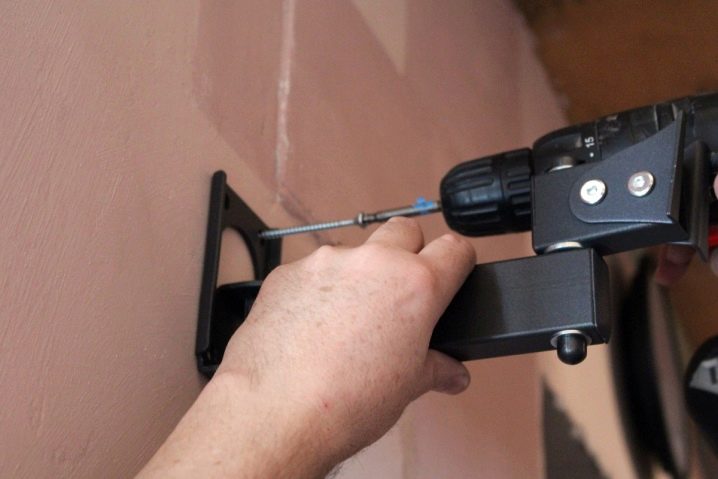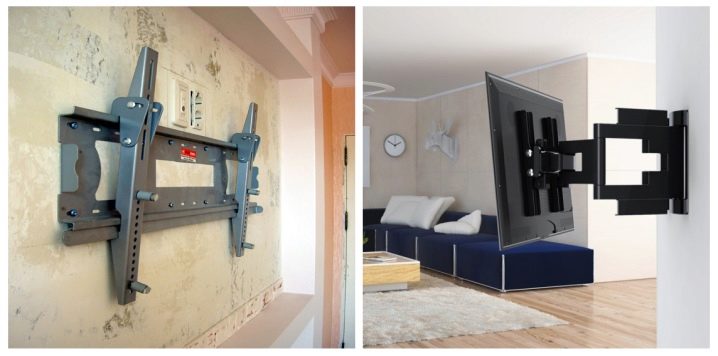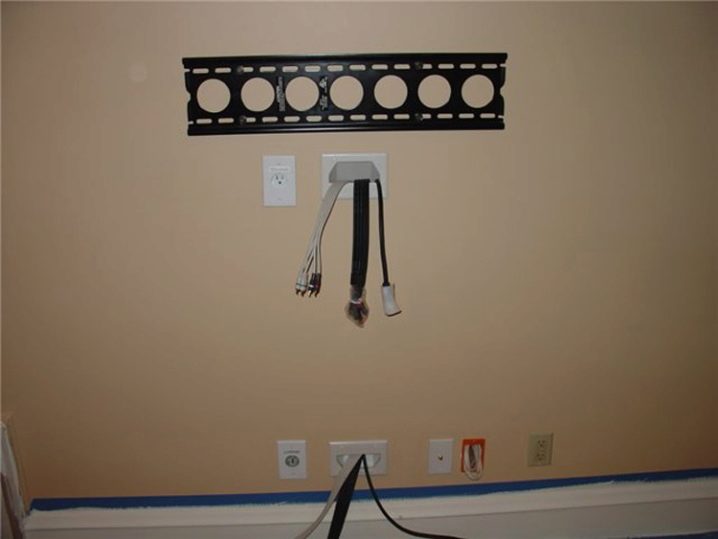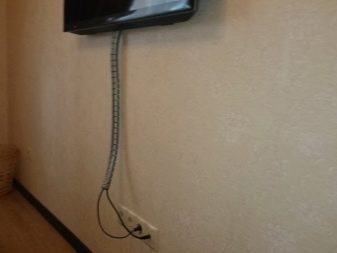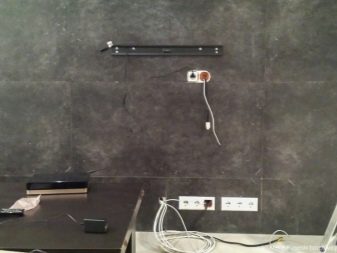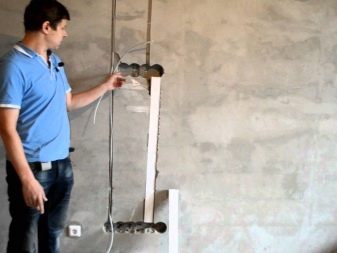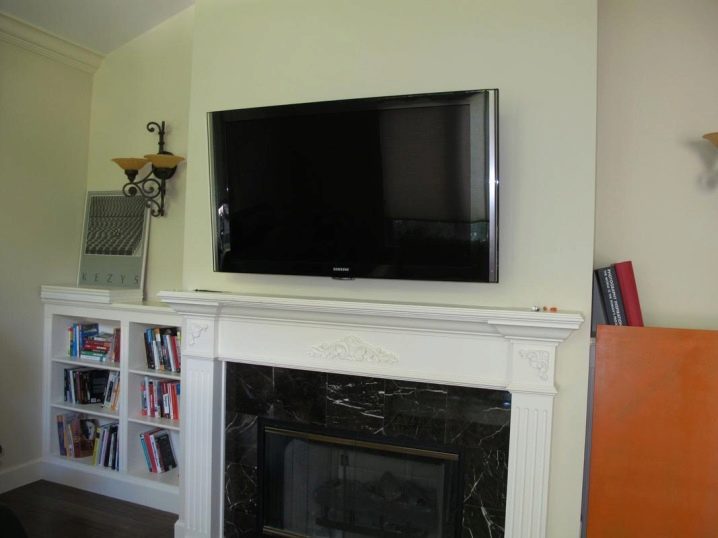How to hang a TV on a wall of plasterboard?
TV has long been considered a necessity in any home. It is installed even in the kitchen and sometimes in the bathroom. Where and how to attach it, everyone decides at their discretion. Recently, it has become increasingly popular to place it on the wall, since this method frees up space. This possibility is fully provided by LCD and plasma TVs. They do not weigh much and due to the design almost do not take place.
The difficulty lies in the fact that increasingly the walls are sheathed with plasterboard sheets, and they consist of a very fragile material and are unlikely to withstand the weight of this technique. But even in such a situation there are ways that allow a person to fulfill his plans with his own hands, without assistance.It is only necessary to adhere to some instructions and accuracy in work. Moreover, there are several options for mounting the device on the wall surface.
Fastener options:
- installation directly to the base is acceptable for small-sized, small-sized devices;
- larger products can be fastened if there is a sheathing lintel jumper at the attachment point;
- installation of the required size of the shelf or niche. This option is used for a TV of any size and weight.
The location of the equipment on the wall provides many advantages:
- the room takes on a neat, uncluttered appearance;
- frees up room space;
- it is not difficult to mount independently;
- allows more practical and functional use of space;
- all fixtures and materials are available and effective.
To avoid unpleasant situations and great damage, consider the dimensions of the TV and calculate the basis for its installation.
Materials and tools
Before starting work on the installation of television equipment on a partition of fragile material without reinforcing the frame, it is important to take care of the availability of the necessary tools. Be sure to have a drill for drilling holes.You will need a perforator if you need to drill a concrete wall for fixing a bar or profile.
You will also need a screwdriver and dowels of the following types:
- "butterfly";
- "umbrella";
- Hartmut.
Such products are made specifically for hollow structures, they expand inside them, what is the fixation. They are single use. Reapplication loses the strength of fasteners and it may not hold the weight. In some situations, there is a need to use anchors.
In the case of the use of embedded amplifiers should be available in wooden bars. Parts must have a square cross-section, and the sides must be equal to 50 mm. Metal corners are also useful.
To personally fix the device on a drywall plane, you will need:
- drill;
- drill;
- screwdriver, if not, then you will have to work a screwdriver;
- pencil and level for marking;
- roulette.
From accessories and material you need to purchase:
- various screws, bolts, dowels or anchors;
- wooden bars;
- brackets if not included with the device;
- corners of metal.
If all this is available, then the work will go smoothly and easily without the help of specialists and will not require additional time due to the absence of one or another object.
Training
Before any major work is done preparation. This situation is no exception.
The preparatory work consists of the following:
- First you need to think carefully about the installation location of the device. Here you can decide on two criteria: the convenience of watching television and preserving the harmony of the interior room.
- Purchase all the necessary accessories and materials for the chosen variant of fasteners.
- Using a level, mark the place where the installation work will be performed and drill a hole of the required diameter with a drill. Their size should fit the mount you choose. Any discrepancy may result in tearing the mount.
In addition, when mounting a metal frame for drywall in the necessary places should be adapted wooden bars. After, at the final stage of finishing works, it is easy to install equipment of any dimensions at the locations of the bars.
The wooden parts of the structure need to be treated with antiseptic composition.to avoid losing the important properties of wood.
If you first perform these steps, you can use any method of installation of the equipment.
Stages of work
The easiest way is to hang up a small-sized TV that has a low weight:
- gently, lightly tapping, to drive in the holes drilled in advance fasteners - dowels;
- with their help, fix the bar with brackets;
- install hardware
Once again we will mention that only flat, small-sized models can be installed this way, otherwise the gypsum plasterboard will not sustain a large mass and will begin to break down. This method is used to install fixed mounts, in which there are no rotating devices.
In case the model is heavier, it is installed on the brackets.
For fastening in this way will need:
- the holes in the drywall to do in the locations of the metal profile, then almost the entire load is transferred to the frame;
- carefully drive special fasteners into the holes made;
- fasten the bracket.
If the device has a rather heavy weight and you plan to install any additional equipment (amplifier, speakers, player, etc., you will need to make a shelf. In this case, you need to design external support legs.
To create them, you must do the following:
- Determine what kind of support I will be. Bearing racks can be made of wooden bars, metal pipes, channels and similar materials. You also need to take into account the forms suitable for the interior and can withstand the required weight.
- Install the supports vertically relative to the wall, fix them securely on the plane so that they do not move.
- Screw the plasterboard sheets onto the received frame.
- If necessary, additional shelves can be built into the frame.
Props can be decorated in any way. Often make them in the form of a fireplace, hearth. The main thing is that they have a beautiful view and match the general atmosphere of the room.
If the device is completed with a ray tube, then it can be hung up by making an external bearing support, a cantilever bracket, called a sleeve, can also be used. So you can achieve a comparison of functionality and aesthetics. The design is not puzzling complexity, and materials for their manufacture are readily available. For such a model, they do not use a niche, because it must be made quite deep, which will in vain occupy space.
Even in such a situation it is categorically not recommended to use the structure with moving parts of the mount. This will give a lot of pressure on the plane of attachment, which would entail the destruction of the gypsum plasterboard.
If you decide to use the design with a turning mechanism, then you need:
- fasten it with bolts;
- it must be attached exclusively to the supporting elements of the frame. To find them, use a magnet, if the skeleton is made of wood, then by tapping;
- the mass of the device must be proportionate to the strength of the base.
To make a niche, you will need a partial dismantling of the wall. Consider the work in stages:
- mark up a rectangular section of the size of a little larger than the television device itself for ease of handling;
- cut out on the markup and take out this part of the drywall;
- remove any elements of the frame profile and fix them around the perimeter of the cut. If they are not enough, it will be necessary to additionally purchase several items;
- sheathe the ends of the niche with drywall strips and trim the entire surface in accordance with the overall finish.You can arrange it in a different way, for example, under the color of the equipment and in any other way;
- we put the technique.
If the wall thickness does not allow you to put the TV, you can fix it in the ways described above or make the bottom of a niche out of a durable material of the desired width. So get something like a windowsill.
Wiring
Before you hang the TV on the wall, you must first consider how to conduct the power source to the location of the devices. Using carriers will not be entirely appropriate, as they will spoil the whole look of the interior.
Any room should be equipped with sockets for connecting household appliances. Indeed, besides the TV device itself, it is necessary to supply the video player, the antenna amplifier and similar equipment with electricity. In such a case, cable wiring is a necessity.
Posting may be:
- Open Here the cable is laid directly on the wall. This method is not very aesthetically pleasing, but it is much simpler and faster and does not require additional repairs.
- Hidden. This option is one of the most common due to the fact that the wires are completely hidden from view, which gives the room accuracy.All cables are camouflaged under the upper or lower baseboards, and are only visible in the connection points directly to the sockets.
It is better to provide for the wiring of the electrical cable at the stage of mounting the skeleton of partitions and cladding it with plasterboard sheets. Embedding this way is not difficult at all.
It is possible to attach a TV set of absolutely any weight and dimensions to a plasterboard wall. To do this, just follow the instructions of the professionals. But significant problems are solved in advance by designing the framework of the walls on which it is necessary to reinforce parts of the fastener places.
During operation, it is necessary to periodically check whether the household appliance heats up or not when it comes into contact with the wall. If heating takes place, then the distance between the partition and the equipment should be adjusted.
How to hang a TV on a plasterboard wall, see the following video.
